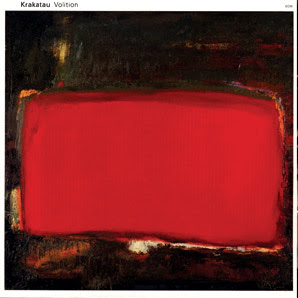:::I Sing the Body Electric:::
Posted: Monday, 21 December 2009 by jazzlover in Etykiety: Eric Gravátt, Hubert Laws Jr, Josef Zawinul, Miroslav Vitous, Wayne Shorter, Weather Report, Wilmer Wise
6
Like the weather itself, this band would assume a new shape with virtually every release - and this album, half recorded in the studio and half live in Tokyo, set the pattern of change. Exit Airto Moreira and Alphonse Mouzon; enter percussionist Dom Um Romao, drummer Eric Gravatt, and a slew of cameo guests like guitarist Ralph Towner, flutist Hubert Laws, and others. The studio tracks are more biting, more ethnically diverse in influence, and more laden with electronic effects and grandiose structural complexities than before. The live material (heard in full on the import Live in Tokyo) is even fiercer and showcases for the first time some of the tremendous drive WR was capable of, though it doesn't give you much of an idea of its stream of consciousness nature.
:::Review by Richard S. Ginell:::
Weather Report - I Sing the Body Electric (1972)
1. Unknown Soldier 7:57
2. The Moors 4:40
3. Crystal 7:16
4. Second Day In August 4:09
5. Medley: Vertical Invader, T.H., Dr. Honoris Causa 10:10
6. Surucucú 7:42
7. Directions 4:37
Credits
Bass - Miroslav Vitous
Drums - Eric Gravátt
Flute - Hubert Laws Jr.
Guitar [12-string] - Ralph Towner (tracks: 2)
Keyboards [Electric & Acoustic] - Josef Zawinul
Percussion - Dom Um Romao (tracks: 2)
Reeds - Wayne Shorter
Trumpet [D And Piccolo] - Wilmer Wise
Vocals - Chapman Roberts , Joshie Armstrong , Yolande Bavan
Weather Report - I Sing the Body Electric (1972)
1. Unknown Soldier 7:57
2. The Moors 4:40
3. Crystal 7:16
4. Second Day In August 4:09
5. Medley: Vertical Invader, T.H., Dr. Honoris Causa 10:10
6. Surucucú 7:42
7. Directions 4:37
Credits
Bass - Miroslav Vitous
Drums - Eric Gravátt
Flute - Hubert Laws Jr.
Guitar [12-string] - Ralph Towner (tracks: 2)
Keyboards [Electric & Acoustic] - Josef Zawinul
Percussion - Dom Um Romao (tracks: 2)
Reeds - Wayne Shorter
Trumpet [D And Piccolo] - Wilmer Wise
Vocals - Chapman Roberts , Joshie Armstrong , Yolande Bavan

















































